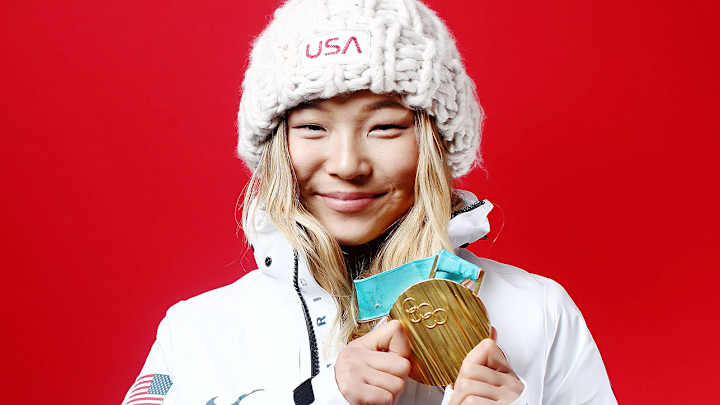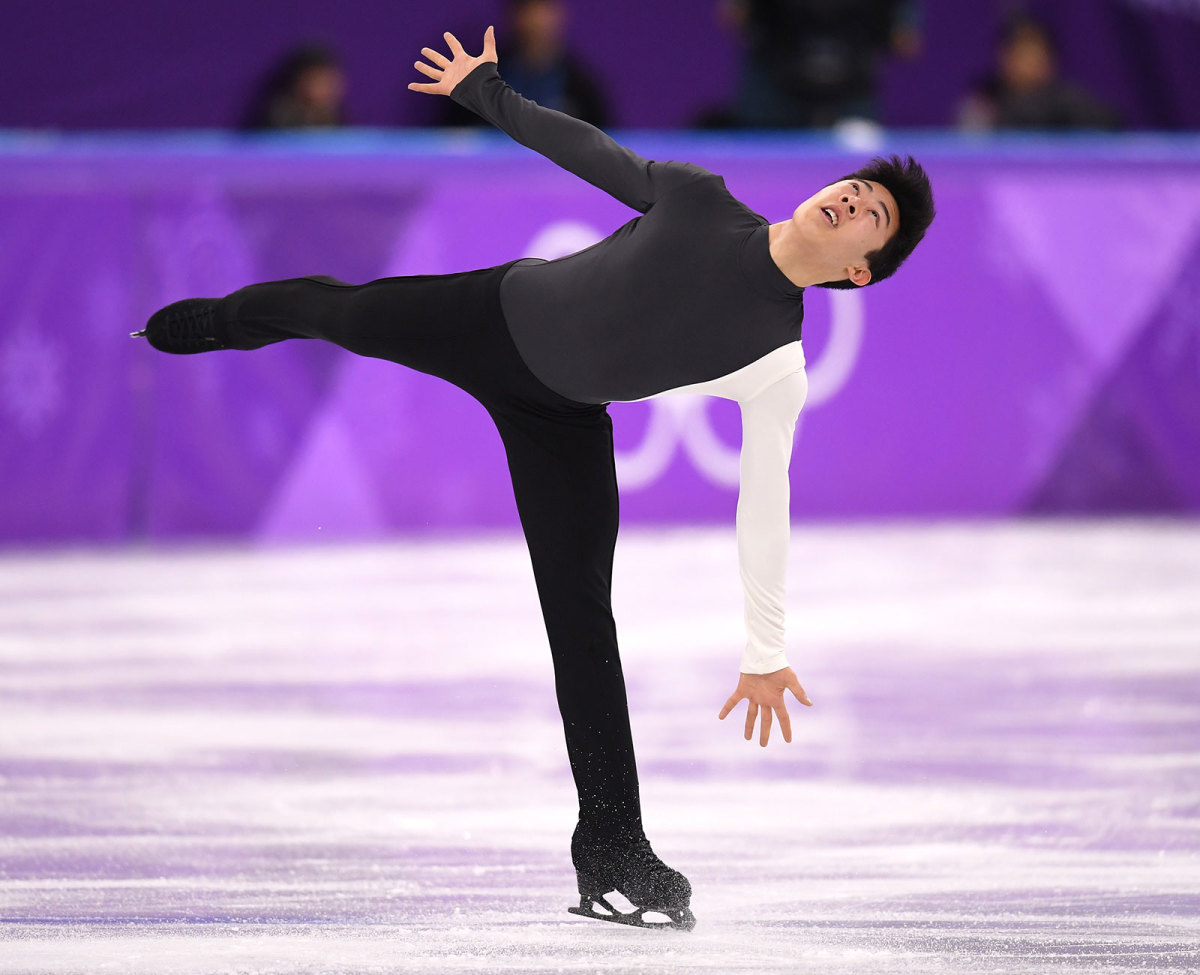Age of Miracles: Chloe Kim and Other Young Olympic Stars Are Set to Shine for Longer Than Ever Before

PYEONGCHANG, South Korea — Phoenix Snow Park, which hosted various events at the PyeongChang Winter Olympics, featured two venues that were absolutely perfect for 17-year-old American Chloe Kim. One was the halfpipe, where Kim won a gold medal. The other was the press conference room, where she started to cash in on it.
Kim cracked jokes and bubbled over about achieving her lifelong dream, and the fact that hers has been such a short life only made it more charming. She dedicated her last run to her Korean grandmother, and she teased her father. “My dad didn’t cry at all, which I don’t get,” the snowboarder said. “I’m like: What are you doing?”
Jong Jin Kim was standing in the back of the room, amused. Maybe he was just saving the tears for 2022 in Beijing, or for 2026 in whatever city the International Olympic Committee chooses for those Games. One perk of winning a gold medal at age 17 is that you don’t have to stop there. Chloe Kim can compete in three more Winter Olympics and still be younger than this year’s men’s snowboard halfpipe gold medalist, Shaun White.
Kim is a phenomenon, but not a lone one. Wherever you went in PyeongChang, you found an extraordinarily young gold medalist. These Olympics are a riveting display of what millennials can accomplish when they put down their phones.

Norway’s Johannes Hoesflot Klaebo, 21, became the youngest gold medalist in the history of cross-country skiing, which is pretty much the history of snow. Red Gerard, 17, of the U.S., won gold in slopestyle snowboarding, then won over America’s hearts when his family declared its love for beer manufacturers.
The U.S.’s Mikaela Shiffrin, 22, won gold in the giant slalom, and though Shiffrin finished fourth in her best event, the slalom, there is another way to look at that: Shiffrin won what isn’t even her best event.
Then again, the Czech Republic’s Ester Ledecka, 22, won gold in the Super-G and skiing isn’t even her best sport. As of Monday, Ledecka was still set to compete in parallel giant slalom snowboarding. She has two months to add a forehand and qualify for the French Open.
The action indoors skewed young as well. Yuzuru Hanru became the first male figure skater in 66 years to win the individual gold medal in two Olympics—and Hanru is just 23. He could three-peat in Beijing, but he will have to beat two record-setting Americans to do it. Nathan Chen, 18, set an Olympic record by landing five quadruple jumps in his long program. Vincent Zhou, 17, became the first Olympian to land a quad Lutz.
If the young stars needed proof that they can contend for medals through several Olympic cycles, they didn’t have to look far. Aksel Lund Svindal of Norway won the downhill at age 35, making him the oldest man to win Alpine gold. White won his third gold medal in halfpipe, 12 years after winning his first. (White may not wait four years for his next Olympics—he says he might try skateboarding, which is making its Olympic debut in the 2020 Tokyo Games.)
The story of the PyeongChang Olympics is that none of the stories were just about the PyeongChang Olympics. The days of capturing fame in a bottle once every four years are gone. To understand why, consider two well-worn and seemingly contradictory bits of advice: Follow your dreams, and follow the money.
At the 1980 Winter Olympics in Lake Placid, the U.S. won six gold medals. The men’s hockey team won one of those. Speed skater Eric Heiden won the other five. And when those Olympics ended, so did the Olympic careers of nearly every one of those athletes. Only two U.S. players, Phil Verchota and John Harrington, would play Olympic hockey again. Heiden stopped skating and dove into careers in medicine and cycling. He signed three endorsement deals. He had no interest in more. Heiden’s path after 1980 was unusual, but his Olympic career arc was not. Like many successful figure skaters, Dorothy Hamill had to capitalize on her 1976 gold medal, so she turned pro. Miracle on Ice captain Mike Eruzione gained fame from his golden goal against the Soviets—and never played another game.
Back then, the IOC’s amateurism rules forced athletes to make a choice: Compete in the Olympics or turn professional. Occasionally, a U.S. athlete would star in more than one Olympics, but only occasionally. In the 1980s, amateurism began to give way to professionalism. The IOC allowed pros to compete in basketball, tennis and hockey.
Sports that were considered purely recreational, like snowboarding, spawned professional circuits. Athletes could aspire to more than just a shot at Olympic glory; they could build lucrative careers around it. Shiffrin and Lindsey Vonn do not just ski for their country and themselves. They ski for Red Bull.
Truly elite athletes do not compete just for the money, but the money allows them to keep competing. For athletes who are healthy and retain their love of their sport, there is no incentive to stop. Today’s Olympians have career paths that are more like NFL stars’ than their Olympic predecessors’. White won his first gold in the halfpipe in 2006, two years before Aaron Rodgers became the Packers’ starting quarterback.
We now tune in to the Winter Olympics expecting to see White, just as we turn on Green Bay games expecting to see Rodgers. White, aka the Flying Tomato, is savvy enough to know what the Olympics mean to his image and, in turn, his bank account. After winning gold in South Korea and bursting into tears, he composed himself and then set an Olympic record for time spent talking to the media in the mixed zone. White accommodated every camera and digital recorder, telling the same stories with the same enthusiasm for every audience.
Like most great athletes, White does not get tired of his own glory. Actually, he just doesn’t seem to get tired. Four years ago, he started working out regularly for the first time. Improvements in nutrition and training methods have allowed 30-year-olds to push themselves like 22-year-olds.

That means we should get used to seeing German biathlete Laura Dahlmeier (24 years old, two golds and a bronze in PyeongChang) and France’s Perrine Laffont (19, gold in moguls) and Sweden’s Hanna Oeberg (22, gold in biathlon). People around the world have always fallen in love with gold medalists. The difference now is that we get to stay in love. And nobody caused more people to swoon in South Korea than Chloe Kim.
Snowboarding has gained some mainstream acceptance since its debut at the 1998 Games in Nagano. But most Americans still think a McTwist is a dessert at McDonald’s, and if your neighbor knows what a crippler seven is, you must live on a mountain.
Nonetheless, Chloe Kim is a star now. We don’t need to fully understand what she does. We just need to know that she does it better than anybody else. Her personality can take care of the rest. At the start of the Olympics, Kim had fewer than 10,000 Twitter followers; by the end of the first week, she was nearing 300,000. Her mid-competition tweets about wanting ice cream and being “hangry” after not finishing her breakfast sandwich were social media gold. Was this her goal? Absolutely not . . . well, sort of. “My mom [Boran] and I are always talking about followers,” Kim says. “She’s like, ‘Post a picture of me so Ican get more followers!’”
Social media followings are not just a reflection of popularity; they are a catalyst. Kim can stay in the public’s consciousness even when we aren’t following her events. “You’re not just relying on a two-week television window every four years,” says Elizabeth Lindsey, managing partner of the Wasserman agency.
Mikaela Shriffrin’s First Race of the 2018 Olympics Ends With Gold
In her role at Wasserman, Lindsey helps sponsors strike deals with athletes, and she thinks Kim can transcend her sport the way White has. (Wasserman also represents many athletes, but she does not rep Kim.) Kim combines athletic greatness, charisma and authenticity—a mixture that advertisers crave.
Wasserman has a proprietary system tracking more than 200 audience variables across 330 million social accounts. At the start of the Olympics, Kim attracted mostly snowboarding fans. Soon after she won, her average fan was three times less interested in extreme sports, which is actually a positive indicator for her potent marketability. Fans don’t have to love her sport to love her.
NBC does not hold a monopoly on Olympic star-making anymore, but that actually makes the network’s job easier. When Mikaela Shiffrin arrives in Beijing in 2022, we will know if she has surpassed Lindsey Vonn as the greatest female skier ever—and as skiing’s endorsement queen. NBC may have to remind us that Nathan Chen followed his disastrous short program in PyeongChang with an extraordinary free skate, but we will have heard the story before. Chen’s attitude—“I already fell so many times, I might as well go out and throw everything down and see what happens”—has surely earned him more fans.
And Kim will not just be the new smiling face of a sport that most of us don’t follow. She will be a celebrity. “She does have a long path in front of her,” says Lindsey. “She is going to be at this a long time. It’s all about relevance. The more you are competing, the more relevant you are.”
PyeongChang introduced many Americans to Chloe Kim, Nathan Chen, Vincent Zhou and plenty of others. Tune in four years from now if you are hangry to see them again.
